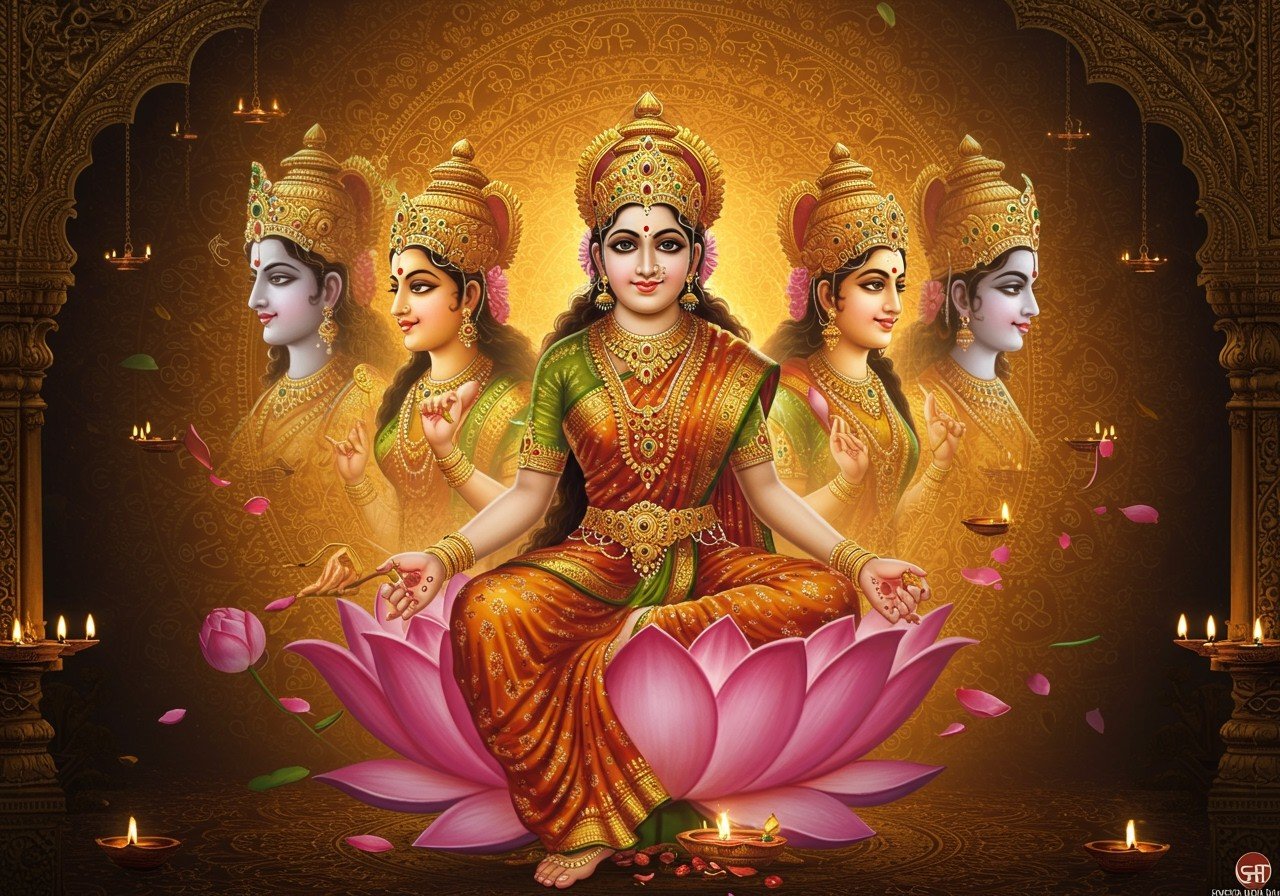
Sita, a revered figure in Hindu mythology, is honored for her unwavering virtue, strength, and devotion. Her name, meaning “furrow,” comes from the Sanskrit word “sīta,” symbolizing dedication and hard work. This meaning is directly linked to the story of King Janaka finding Sita in a furrow during a sacred yagna (ritual sacrifice), signifying her birth from the earth.
Sita’s 108 Names (Ashtottara Shatanamavali)
The Ashtottara Shatanamavali, the 108 names of Sita, are recited in prayers and rituals to invoke her blessings. Each name illuminates a specific attribute or event from her life. In Hinduism, the number 108 represents completeness and spiritual wholeness. Names like ‘Janaki‘ signify her lineage as King Janaka’s daughter, while ‘Rama Priya‘ emphasizes her love and loyalty to Lord Rama. ‘Bhumija‘ highlights her birth from the earth, symbolizing purity and strength, and ‘Maithili‘ connects her to the kingdom of Mithila, reflecting her cultural identity. These names, recited with reverence, help devotees connect with Sita’s divine qualities.
Why is Sita called Vaidehi?
Sita is called ‘Vaidehi‘ because of her connection to the kingdom of Videha, ruled by her father, King Janaka. This name not only signifies her royal lineage and noble upbringing but also embodies the virtues she cultivated under her father’s guidance. This name represents wisdom, patience, and resilience, qualities Sita displayed throughout her life. Moreover, ‘Vaidehi’ also reflects her strength and dignity in the face of adversity, serving as an inspiration for individuals navigating life’s challenges. Her life in Videha provides cultural and spiritual insights for people today, promoting virtues like patience and resilience.
Why is Sita called Siya?
‘Siya‘ is a term of endearment and respect for Sita, used across various Indian languages and dialects. This variation reflects the widespread influence of her story. ‘Siya’ embodies her gentler attributes: compassion, grace, and empathy. This name also features in traditional songs, folklore, and storytelling, preserving her legacy across generations. This intimate appellation allows devotees to feel a deeper, personal connection with the revered goddess. The use of ‘Siya’ also reflects regional and cultural nuances in how Sita’s story is told and remembered.
Cultural Significance of Sita’s Names
Sita’s names are more than just labels; they carry profound philosophical and moral teachings. They serve as an inspiration for women, symbolizing virtues like courage, purity, and devotion. These names play a vital role in religious rituals, festivals, and storytelling traditions, reinforcing moral values and cultural identity across generations. In literature and art, Sita’s names continue to be reinterpreted, reflecting her enduring relevance. By understanding her names, we gain a deeper appreciation of the concept of feminine divinity in Hinduism. The reverence for Sita’s names contributes to a broader understanding of feminine divinity in Hinduism, highlighting the diverse roles women play in spiritual and cultural contexts. They also reveal how these roles are celebrated and revered.
Explore our collection of divine idols and puja essentials to honor Sita Mata at poojn.in.
You can find beautiful brass idols of deities and all the necessary items for your puja needs at poojn.in.
Conclusion
Sita’s names and titles form a rich tapestry of meaning and significance in Hindu mythology. Each name acts as a thread connecting us to her virtues, her stories, and the timeless lessons she teaches. Whether we call her Janaki, Vaidehi, or Siya, we honor her unwavering strength, compassion, and dignity. These names transcend mere words; they are a source of inspiration, guiding us towards a life of righteousness and devotion. As we reflect on Sita’s legacy, we embrace the values she embodies, finding in her story a beacon of hope and moral integrity. Her story offers profound insights into human nature and the pursuit of dharma (righteous conduct), inspiring individuals to strive for moral excellence.
Explore Hindu Philosophy
Discover Hindu Symbols
Learn about Lord Rama
Explore Hanuman’s Journey
Discover Ramayana Geography


